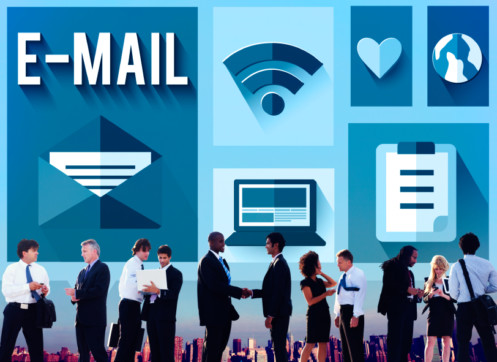Retaining Your New P2P Donors (Hint: Acquiring Their Emails Is Only the First Step)

Email Message Send Connection Communication Concept
I was recently asked for advice on how to engage with all of the new donors that were added to a database as a result of a walk-a-thon. While my mind was immediately went to all of the buzzwords—retention, strategy, welcome series—I began to realize that there’s a definite lack of focus on post-event strategies across the industry. Organizations are so laser-focused on reaching the finish line with their P2P event that they often fail to put in place a complete game plan for their newly acquired email addresses. ALS faced this exact challenge when they suddenly had 1.9 million new constituents in their database after the success of the Ice Bucket Challenge.
Acquiring an email address is golden, but the question is what do you do once you have it?
1. Segment
These new donors, often called “net new donors”, should be segmented from the rest of the database population so that you can target these individuals differently.
2. Welcome Series
Have a Welcome Series in place just for this new segment of donors. Remember, 1 in 4 people donate to a cause because a friend or a family member asked them to. These individuals may not have any idea what your mission is, so create mission moments with them. A special welcome series targeted at just this group can be the key to donor retention and the tipping point to get them involved in other areas of your cause.
Your communication plan should follow something like this:
- Send a personal thank you from leadership and share what it is that you do. Show visibility into the impact of the donations that were raised by showcasing something specific: a family that you fed, or a cancer survivor that you are assisting. Great stories and compelling imagery can go a long way in showcasing your good work.
- You can also engage the donor in a future email with something fun like a survey or quiz. The point here is that you are still not asking for money, but you are trying to gain more information about this constituent.
- In yet another email, give the recipient additional ways to get involved. You can list 3-4 options (no clutter!) such as Subscribe to our email list or Create a DIY fundraising page.
3. Future Appeals
Make sure that you’re considering the timing for your follow-up asks. For example, if your P2P walk-a-thon was in October and in November you are ready to start your end of year appeals, should you include this list of net new donors? Probably not. Take into account all other initiatives going on at your organization, ensure marketing and other departments are aware of your segmented list, and bring those net new donors into the fold slowly and methodically.
4. Migration Plans
After you have kept this list of net new donors separate from your other communications for some time, have a plan to eventually put them into your general bucket of constituents. How will you phase them in? Perhaps asking this group to tell you what their interests are—what updates or newsletters they would like to receive—and offer ways for them to tailor their communications from you. By adding this feature, you are less likely to receive unsubscribes.
By following these steps, you are more likely to retain those donors that perhaps got involved simply because a friend or family member asked them to. Over time, that can lead to an increase in donations, more exposure, and additional long-term fundraisers.



